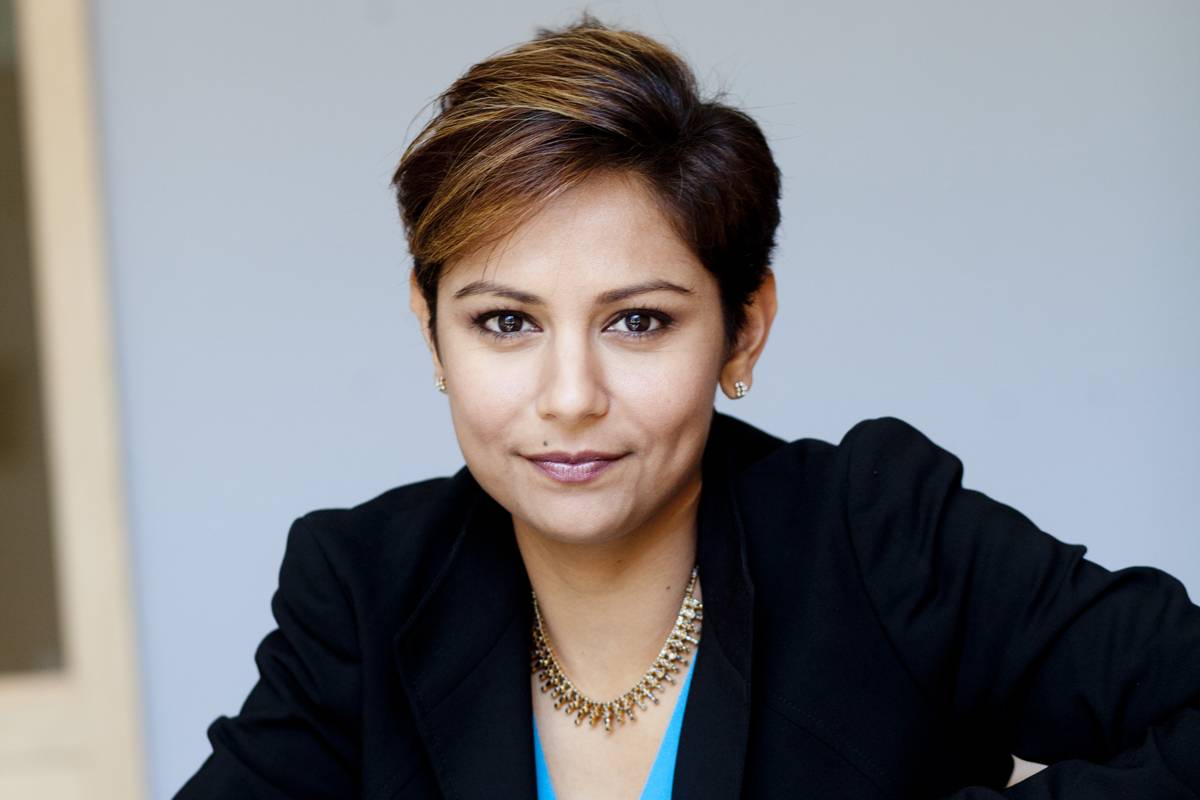In Search of Why
A conversation with Eesha Sharma, Assistant Professor of Business Administration.

A conversation with Eesha Sharma, Assistant Professor of Business Administration.
Eesha Sharma moved rapidly from bachelor’s degree to Ph.D. at New York University’s Stern School, to investment banking at Goldman Sachs, to academia—where today she is focused on digging into and teaching what she calls “the findings of ‘why.’” Her current research involves how consumers assess and respond to states of deprivation in their own lives and others’ and the financial decisions they make as a result. Professor Sharma teaches the Consumer Insights marketing elective at Tuck and Introduction to Marketing in the Master of Engineering Management program at the Thayer School for Engineering.
Can you describe your current research?
I have several projects right now. A current project that I am excited about and that I recently presented at the North East Marketing Conference at Harvard Business School explores the drivers of consumers’ willingness to borrow for discretionary purchases. Previous research on borrowing has primarily examined how consumer characteristics (e.g., age, income, education) and loan characteristics (e.g., interest rates, time to repayment) affect borrowing. My research adds to a much smaller literature on how characteristics of the underlying purchase affect borrowing. Our findings demonstrate that the perceived time-sensitivity of a purchasing opportunity is a stronger driver of willingness to borrow than previously determined characteristics. Further, our findings suggest that this leads people to have a systematically higher willingness to borrow for experiences over physical products.
How does this relate specifically to discretionary purchases?
As an example, previous research examined the following scenario. If a person wants to take a vacation and also wants to buy new furniture and they only have cash for one purchase, people would prefer to use cash to pay for the experience and borrowed funds (e.g., a loan) to pay for the furniture. This is because people like to receive benefits as they’re paying so they prefer to use borrowed funds for longer-lasting purchases. However, in my current research, which I’m working on with Stephanie Tully, from USC’s Marshall School of Business, what we have found is actually the opposite: people are more willing to borrow money to pay for the “experiences” they want. We show that this is not due to experiences being preferable in general but rather because experiences are inherently defined by a specific period of time, so it seems that the timeline for acquisition is more important. We reconcile our results with previous research by showing that the perceived time-sensitivity is a stronger driver of borrowing decisions than is the desire to receive benefits while one is paying for a purchase. This work has many potential implications for managers and financiers since financing options are more currently more commonly available for physical goods than for experiences.
So psychological factors are involved.
Yes. Which can be a challenge in research—even when you can get actual data, you’re never going to get an exact proxy for psychological factors. This ties into another project on a charitable-giving phenomenon that I’m interested in. The basic idea is that people tend to give for what they think are emergencies, things that have just happened. There’s a present bias where people can more easily think about something that has recently happened (e.g., reactive charitable causes) than about things that have not happened yet (e.g., preventative charitable causes).
I understand you are working on another study related to consumer financial decisions?
Punam Keller [associate dean for innovation and growth, and Charles Henry Jones Third Century Professor of Management at Tuck] and I are working on a project on how consumers can increase their savings. There is some literature that suggests that when people feel poor, they may make worse financial decisions, including those related to savings. We’re finding that it isn’t always the case that people are actually worse about saving when they feel poor; they’re focused on something else, such as ways to earn more money. If given two choices between options that boost their financial well-being, one from saving and one from earning, people will prefer the earning option. Even if the savings amount is actually greater. We demonstrate that by reframing offers—for example, an appeal to get a new credit card—from a focus on savings to one that seems focused on earnings, we can boost people’s participation and reduce that preference for earnings over savings.
Do you remember what made you want to move into academia?
My interests evolved. I have a strong passion for data and analysis, and I realized that I wanted to be able to use these interests in a more creative function. And academia is the perfect fit for me. I can’t imagine doing anything else. I enjoy thinking about ways to bridge ideas and explore real-world phenomena and problems. I love exploring data and seeing what it has to say and uncovering things that I didn’t know before. It’s so interesting to be an investigator, to get your hands dirty with data and do heavy rigorous analysis and at the same time have the creativity to design a study that tests your ideas.
So it sounds like you have to have discipline for the analytical aspect but be open to what else might show up and what it relates to?
Yes—you have to enjoy the challenge involved with data and be really good at thinking about experimental design, but also be open to what the data say. Often my projects have evolved as a function of the data. I learn that my initial ideas were incorrect, but sometimes that makes things more exciting. You then have to think through why the idea may not be there and try to make sense of the patterns of data that are there. And as a researcher and teacher, you have to enjoy digging through literature, and writing about and presenting your ideas.
